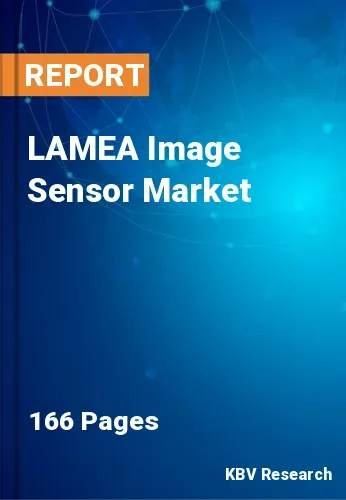The Latin America, Middle East and Africa Image Sensor Market would witness market growth of 14.6% CAGR during the forecast period (2023-2030). In the year 2026, the LAMEA market's volume is expected to surge to 83,321.1 thousand units, showcasing a growth of 16.1% (2023-2030).
Telescopes and observatories use image sensors to capture celestial objects and phenomena. These sensors help astronomers observe and analyze distant galaxies, stars, and planets. These are mounted on drones and agricultural machinery to capture data about crop health, soil conditions, and irrigation needs. This data is used to optimize farming practices and improve yields. In gaming, these enable motion tracking and gesture recognition in devices like the Xbox Kinect and VR headsets. They immerse players in virtual worlds and enhance gameplay. Satellites and spacecraft use these to capture images of Earth and other celestial bodies.
Image sensors are essential for machine vision applications in manufacturing and industrial automation. They enable quality control, defect detection, and automation in various industries, improving production efficiency and product quality. Industrial robots rely on these for vision-based tasks. These sensors provide robots with the ability to perceive their environment, pick and place objects, and navigate autonomously in a factory or warehouse setting. These play a role in barcode and QR code scanning for inventory management, order tracking, and asset identification in warehouses and logistics.
As per the International Trade Administration, in the Gulf Cooperation Council and the MENA region, Saudi Arabia sold 35% and nearly 52% of the vehicles in 2020, respectively. In 2019 and 2020, Saudi Arabia sold 556,000 and 436,000 vehicles, respectively. The Middle East automotive industry is progressively embracing ADAS technology, which relies on these to provide features, including adaptive cruise control, lane-keeping assistance, and automated emergency braking. The Middle East region is developing smart cities and investing in advanced traffic management solutions. The factors mentioned above will drive the regional market growth.
The Brazil market dominated the LAMEA Image Sensor Market, By Country in 2022, and would continue to be a dominant market till 2030; thereby, achieving a market value of $1,486 million by 2030. The Argentina market is showcasing a CAGR of 15.2% during (2023 - 2030). Additionally, The UAE market would register a CAGR of 14.3% during (2023 - 2030).
Based on Type, the market is segmented into CMOS (Front Side Illuminated (FSI), and Back Side Illuminated (BSI)), and CCD. Based on Vertical, the market is segmented into Consumer Electronics, Automotive, Defense & Aerospace, Industrial, Medical, Security & Surveillance, and Others. Based on countries, the market is segmented into Brazil, Argentina, UAE, Saudi Arabia, South Africa, Nigeria, and Rest of LAMEA.
Free Valuable Insights: The Worldwide Image Sensor Market is Projected to reach USD 64.3 Billion by 2030, at a CAGR of 12.2%
The market research report covers the analysis of key stake holders of the market. Key companies profiled in the report include Sony Corporation, Samsung Electronics Co., Ltd. (Samsung Group), OmniVision Technologies, Inc., STMicroelectronics N.V., ON Semiconductor Corporation, Panasonic Holdings Corporation, Canon, Inc., GalaxyCore Shanghai Limited Corporation, PixArt Imaging, Inc., and Toshiba Corporation.
By Type (Volume, Thousand Units, USD Billion, 2019 to 2030)
By Vertical (Volume, Thousand Units, USD Billion, 2019 to 2030)
By Country (Volume, Thousand Units, USD Billion, 2019 to 2030)

Our team of dedicated experts can provide you with attractive expansion opportunities for your business.

